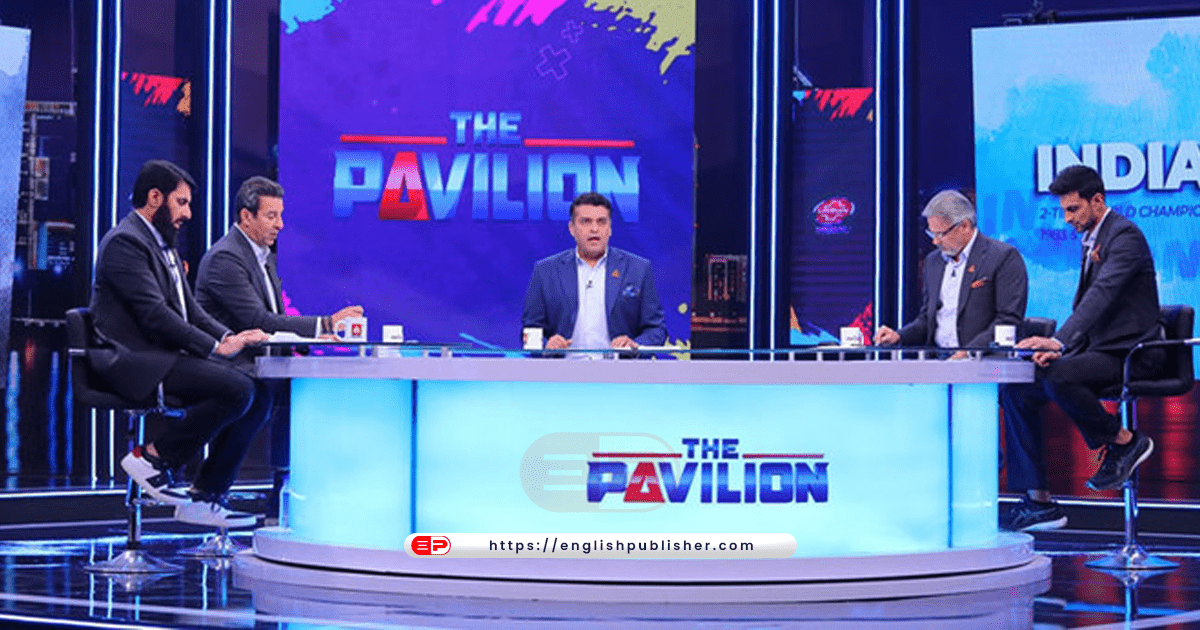The long-standing strained relations between India and Pakistan have often affected the two neighboring countries, particularly in matters of cultural exchange.
However, a Pakistani cricket show aired during the 2023 Cricket World Cup has succeeded in erasing these tensions and differences to some extent.
And this was evident at the end of every Cricket World Cup match held in October and November when thousands of Indian fans flocked to YouTube to watch the cricket show ‘The Pavilion’.
The show started in the year 2021 and is usually aired during every major cricket tournament and features an impressive line-up of former Pakistani players.
Its latest World Cup edition ended a day after the final between India and Australia. Famous former cricketers Wasim Akram, Moin Khan, Shoaib Malik and Misbah-ul-Haq were included in the shows presented during this time.
Watching this show was like sitting around a table with a group of friends discussing cricket and listening to good commentary and anecdotes about the game.
And Salman Iqbal, owner of ARY Media Group, the production company presenting the show, says that this has always been the aim of ‘The Pavilion’.
Salman Iqbal said: ‘We have focused on keeping it as a light presentation in a conversational style and we rely on the experts to give their cricketing opinions but anything else. Don’t try to make it too complicated.’
Light words free from negativity
“You won’t see negativity and toxicity on the show.”
But the immense popularity of the show in India has taken him and many others by surprise.
Many Indian cricketers including former India captain Kapil Dev and Sourav Ganguly have praised the format of the show. Rajdeep Sardesai, an Indian journalist and a fan of the game, called it “the best cricket show of the World Cup” because, according to him, there was “no bullshit, no noise, just solid analysis and the truth from former players”.
Many have compared the success of ‘The Pavilion’ to ‘Coke Studio’, a long-running Pakistani music program that has thousands of fans worldwide, including Indians.
Legendary Pakistani fast bowler Wasim Akram told the BBC that the pavilion was enjoyable for everyone because it was ‘an honest show’.
He said: ‘We just kept playing ourselves. Some humour, some jokes, some jokes, some stories and the most important of them all was cricket.
There is a fierce rivalry between India and Pakistan in relation to cricket. And both countries go from stand-to when their teams take the field against each other.
But due to political tension between the two countries, cricket is often left behind. The two teams have not toured each other’s country or played a bilateral series for many years.
Amid political tensions this year, it was initially unclear whether the Pakistani team would make it to India for the World Cup (they eventually did and toured India).
Abhishek Mukherjee, head of Indian content at leading cricket media house Wisden, says that it is difficult to explain the tension between India and Pakistan to outsiders. However, he emphasized that for The Pavilion, the love between the people of the two countries is a proof that they are deeply interested in each other’s culture.
Welcome on social media
During the World Cup, clips from a show called The Pavilion were widely shared on social media in India, especially clips in which the panelist praised Rohit Sharma’s team.
Wasim Akram’s defense of the Indian bowlers after being accused of cheating in the World Cup by some in Pakistan was one of the most popular episodes of The Pavilion. Regarding the criticism, Akram said, “We also want to achieve what these people have.”
Mukherjee says that the show did not try to defame any country and that was its beauty.
He said: ‘When he talks about Indian cricket, he does not try to belittle India. He was just talking about another team that was playing well.
According to him, the analysis on the show was also ‘top notch’.
Other factors also helped the show become popular in India even though it was not aired on TV channels in India.
During the show, the panelists spoke in English, Urdu and Punjabi, languages that many Indians understand very well. Along with this, the former cricketers seen at the pavilion have been popular in India and their presence has also revived old memories.
“I grew up (watching cricket) in the 2000s,” says Amrit Patnaik, who lives in India’s eastern coastal state of Orissa. The players on the show like Misbah-ul-Haq, Wasim Akram, Moeen Khan were people that I grew up fearing and respecting as an Indian fan. It’s great to see the same players saying such wonderful things about India.
Cultural exchange
Amrit Mukherjee said that the show also filled a gap as no other cricket show on Indian TV was syndicated during the World Cup, even though the country was hosting the tournament.
He said the coverage offered on Star Sports, the official broadcaster of the tournament, was too ‘India-centric’.
The pavilion is the latest link in a long line of cultural and sporting products between the two countries that have been welcomed on both sides of the border.
Pakistanis have grown up watching Bollywood movies, while Pakistani TV serials have been widely watched and appreciated in India. Although the two governments have restricted cultural exchanges in recent years, artists from the two countries have often participated in different projects.
And cricket also comes under its scope. Wasim Akram and his teammate Shoaib Akhtar appear on Indian talk shows, while another Pakistani cricketer, Shahid Afridi, once said that he got more love in India than in Pakistan.
Salman Iqbal says that saying that sport has the ability to unite people may sound old-fashioned, but it is still a truism for India and Pakistan.
“And for a Pakistani cricket show to garner such acclaim in India is a huge indication that cricket has the immense power to bring people together.”
